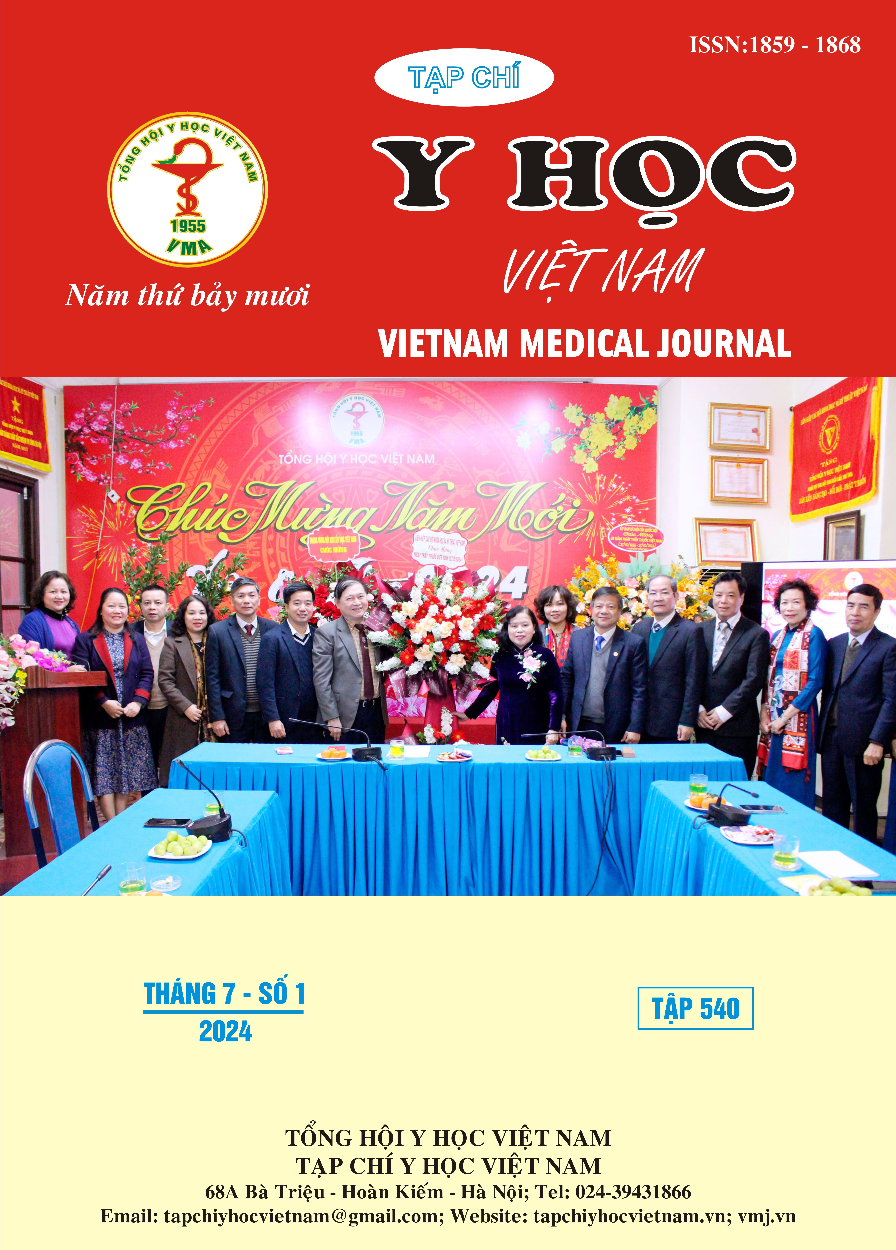PROCALCITONIN ON POSTOPERATIVE INFECTION AFTER PEDIATRIC CARDIAC SURGERY WITH CARDIOPULMONARY BYPASS
Main Article Content
Abstract
Objectives: Diagnosing infection in children after cardiac surgery with cardiopulmonary bypass remains challenging. This study aims to determine the value of procalcitonin in the diagnosis of postoperative infection in pediatric patients undergoing cardiac surgery with cardiopulmonary bypass. Materials and methods: Longitudinal prospective study with 50 patients undergoing cardiac surgery with cardiopulmonary bypass from December 1, 2021 to May 31, 2023 at City Children's Hospital were included in the study. PCT was tested before surgery, immediately after surgery and on postoperative day 3. Diagnostic criterias for postoperative infection according to Centers for Disease Control and Prevention (CDC) 2008. Area under the curve was used to evaluate the value of PCT in diagnosing postoperative infection. Results: 33 patients were postoperative infections. Median PCT at the time immediately after surgery and postoperative day 3 were 1.9(0,7-16,8) ng/ml and 7.3(5,1-12,1) ng/ml. The variation of PCT on postoperative day 3 compared to immediately after surgery and the percentage difference of PCT on postoperative day 3 compared to immediately after surgery did not have a significant difference between the infected and noninfected groups. The area under the curve (AUC) of PCT for diagnosis of infection on postoperative day 3 was 0.67, the optimal cut-off values 9.22 ng/ml, sensitivity 48.5%, specificity 70.6% with positive predictive value 76.2%, negative predictive value 41.4%. The AUC of combining PCT, WBC and CRP on postoperative day 3 was 0.81, sensitivity 75.8%, specificity 80%, positive predictive value 89.3%, negative predictive value 60%. Conclusions: PCT at the time immediately after surgery, postoperative day 3 has no value in diagnosing postoperative infection. The combination of PCT, WBC and CRP on postoperative day 3 has better value in diagnosing postoperative infection in pediatric patients undergoing cardiac surgery with cardiopulmonary bypass.
Article Details
Keywords
postoperative infection, Procalcitonin, cardiac surgery with cardiopulmonary bypass.
References
2. Paddy McMaster, Dong Young Park, Frank Shann, et al. Procalcitonin versus C-reactive protein and immature-to-total neutrophil ratio as markers of infection after cardiopulmonary bypass in children. Pediatr Crit Care Med. 2009 Mar; 10(2): 217-21. doi: 10. 1097/PCC. 0b013e31819369f3.
3. Qiang Miao, Sheng-Nan Chen, Hao-Jing Zhang, et al. A Pilot Assessment on the Role of Procalcitonin Dynamic Monitoring in the Early Diagnosis of Infection Post Cardiac Surgery. Front Cardiovasc Med. 2022 Jun 2:9:834714. doi: 10.3389/fcvm.2022.83471.
4. David E Michalik, Brian W Duncan, Roger B B Mee, et al. Quantitative analysis of procalcitonin fter pediatric cardiothoracic surgery. Cardiol Young. 2006 Feb; 16(1):48-53. doi: 10.1017/S1047951105002088.
5. Xia Li, Xu Wang, Shoujun Li, et al. Diagnostic Value of Procalcitonin on Early Postoperative Infection After Pediatric Cardiac Surgery. Pediatr Crit Care Med.2017. 18(5), pp.420-428. doi: 10.1097/PCC.0000000000001118.
6. Maurice Beghetti, Peter C Rimensberger, Afksendiyos Kalangos, et al. Kinetics of procalcitonin, interleukin 6 and C-reactive protein after cardiopulmonary-bypass in children.Cardiol Young. 2003 Apr; 13(2): 161-7. doi:10.1017/ s1047951103000301
7. Ronaldo Arkader, Eduardo Juan Troster, Deipara Monteiro Abellan, et al. Procalcitonin and C-Reactive Protein Kinetics in Postoperative Pediatric. J Cardiothorac Vasc Anesth. 2004 Apr; 18(2):160-5. doi: 10.1053/j.jvca. 2004.01.021.
8. Bana Agha Nasser, Abdu Rahman Mesned, Mohamad Tageldein, et al. Can acute‐phase response biomarkers differentiate infection from inflammation postpediatric cardiac surgery? Avicenna Journal of Medicine. 2017 OctDec; 7(4):182-188. doi: 10.4103/ajm.AJM_51_17.


